
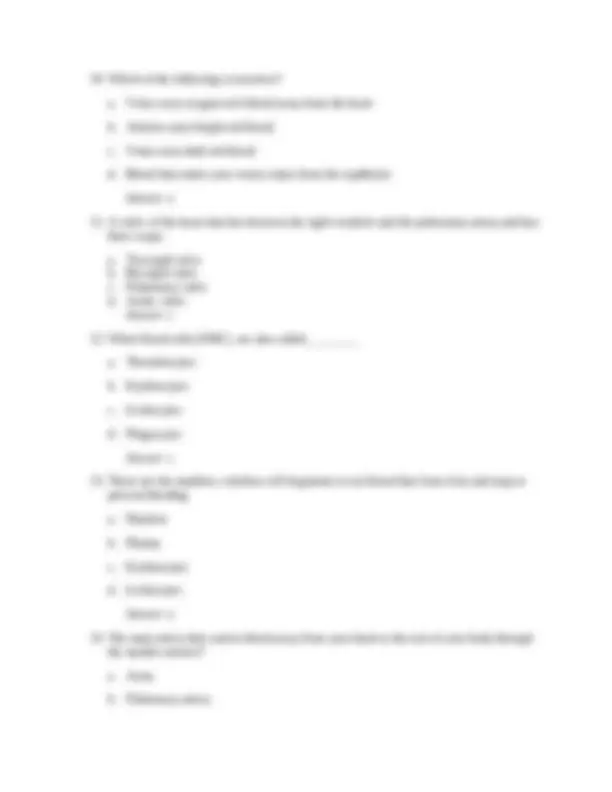
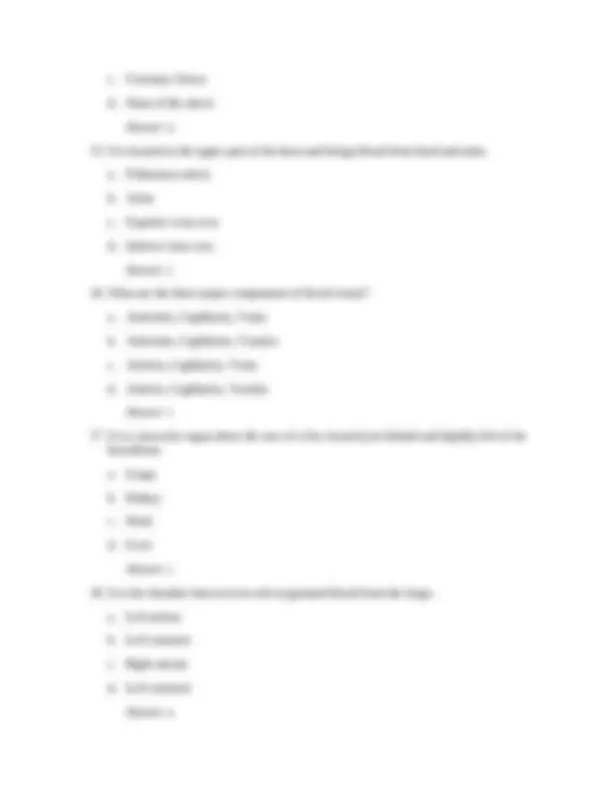
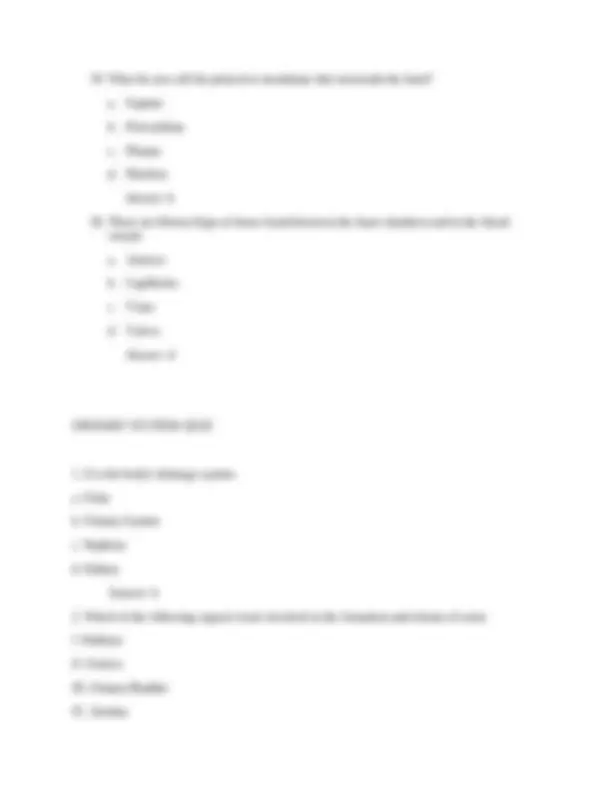
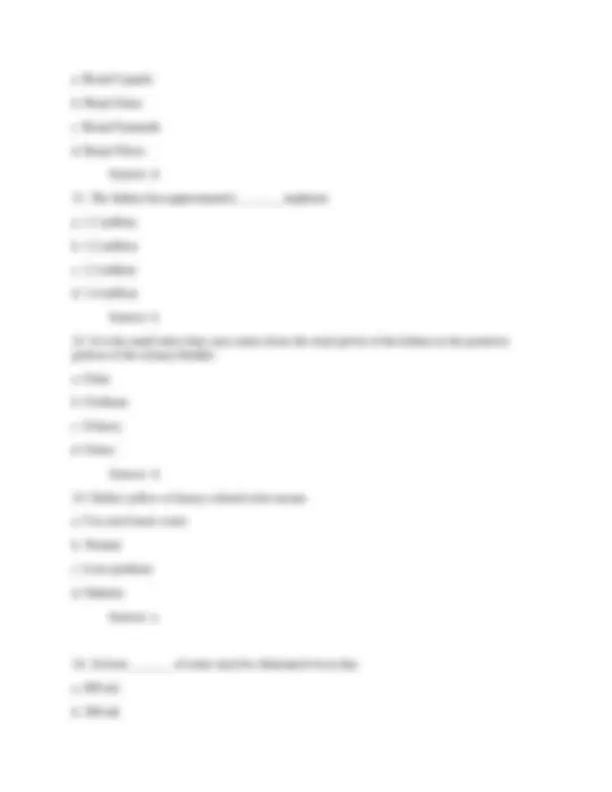
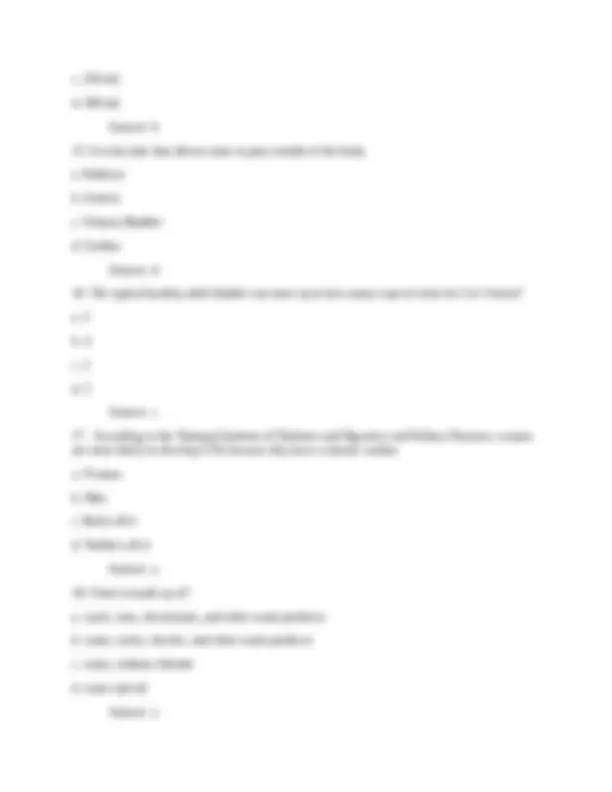



Study with the several resources on Docsity

Earn points by helping other students or get them with a premium plan


Prepare for your exams
Study with the several resources on Docsity

Earn points to download
Earn points by helping other students or get them with a premium plan
Community
Ask the community for help and clear up your study doubts
Discover the best universities in your country according to Docsity users
Free resources
Download our free guides on studying techniques, anxiety management strategies, and thesis advice from Docsity tutors
A quiz consisting of 20 multiple-choice questions about the cardiovascular and urinary systems. The questions cover topics such as the functions of different organs, the components of blood, and the terminology used to describe different parts of the body. The quiz is useful for students studying anatomy and physiology or for anyone interested in learning more about the human body.
Typology: Quizzes
1 / 10

This page cannot be seen from the preview
Don't miss anything!







a. Arteries b. Capillaries c. Veins d. All of the above Answer: c
c. Coronary Artery d. None of the above Answer : a
III. Regulation of the concentration of solutes in the blood IV. Regulation synthesis a. I only b. II and IV only c. II and III only d. All of the above Answer: d
a. Renal Capsule b. Renal Sinus c. Renal Pyramids d. Renal Pelvis Answer: d